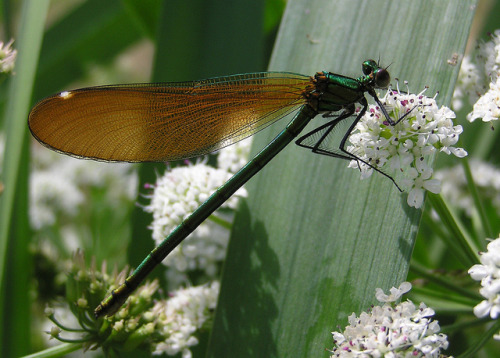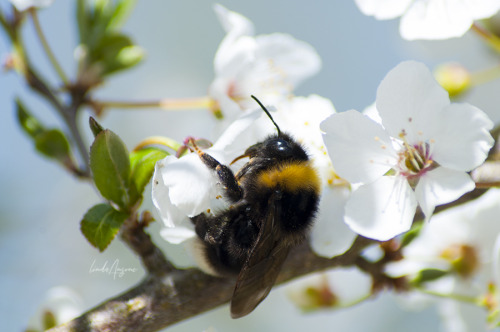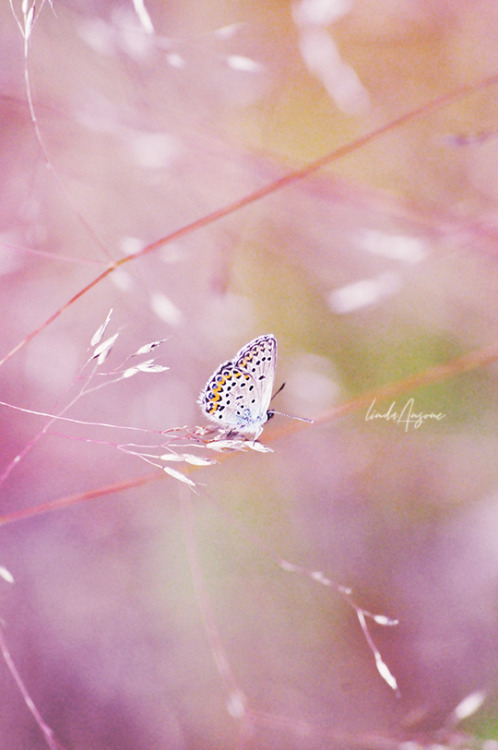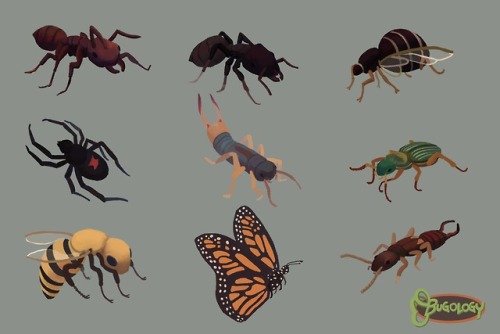#insects
do you think the process of metamorphosis hurts ? does the transforming creature inside the pupa understand whats happening to it ? do you think theyre scared ? do you think theyre afraid ?
this is so metal and most would call this poetry but reasonably i know from being on this hellsite long enough that you’re just gay and really into bugs
Ischnura elegans - Blue-tailed Damselfly - Agrion élégant - 29/06/12byPhilippe_Boissel on Flickr.
Ischnura elegans
Post link
Calopteryx virgo - Caloptéryx vierge (♀) - Beautiful Demoiselle - 08/06/11byPhilippe_Boissel on Flickr.
Calopteryx virgo
Post link
a team of florida harvester ants (Pogonomyrmexbadius) carrying a yellowjacket corpse back to their nest (Florida, 4/25/22). Harvester ants feed mainly on seeds which are stored in large subterranean granaries, but won’t pass up the opportunity to scavenge insects as well.
Found in dry, sandy habitats along the southeastern coastal plain, P. badius is only Pogonomyrmexnativetothe region,the rest being found mainly in southwestern deserts. It’s also unique among its genus for its dimorphic worker castes- smaller, more agile minor workers and larger majors with huge heads and jaws for crushing seeds and dismembering enemies.
Pogonomyrmex workers also have the most toxic venom known from any insect (or at least, the most toxic to mammals). They have an extremely painful sting to match, though it’s not as bad as some larger insects that inject a greater quantity of less toxic venom.

Hanging thief robberfly (Diogmitescrudelis) preying on a large sweat bee (Dieunomiaheteropoda). (Florida, 9/2/21)
From what I’ve observed, Diogmites’habit of dangling from one or two legs while handling prey seems to help them make a quick escape if disturbed by a larger predator while feeding, but also probably keeps dangerous stinging prey at a safe distance from the fly’s body as they struggle before the venom sets in.
Sometimes reaching nearly 2” in length, D.crudelis is the largest hanging thief and one of the largest north american robberflies overall. Its scientific name translates as something along the lines of “ruthless pursuer” or “cruel hunter”
a really cute Canthon dung beetle I found on the delmarva peninsula awhile back
(Virginia, 10/14/21)

This is the type of dung beetle found in north america that makes little balls of dung and rolls them around, and while I’ve never been lucky enough to witness that in action the beetles themselves are still pretty excellent
pink-spotted hawmoth (Agriuscingulata). Florida, 11/16/21
Found in the southern US and across the neotropics, this species looks very similar to co-occurring sphinx moths in the genus Manduca, but it’s more closely related to several old world species including the famous death’s head moths (Acherontia) than it is to any other sphingid from the Americas. Its caterpillars typically feed on plants in the morning glory family, while the adults nectar on the flowers of those same plants.


moths like this provide an example of a defense strategy called startle coloration- nearly invisible when camouflaged on bark, the moth will flash its bright pink markings if it is found and disturbed, potentially startling a predator long enough for the moth to escape and making it less likely to be found again when it resumes its resting position and ‘disappears’.

Florida beekiller (Mallophorabomboides) feeding on a Polistes paper wasp (Florida, 9/25/21).
This huge hairy robberfly found primarily in open habitats in Florida is not only a bumblebee mimic, but also a specialist predator that feeds almost exclusively on bees and wasps. A related species from South America, M. ruficauda, sometimes eats enough bees to cause 80% losses in honey production around apiaries.
The bee mimicry of Mallophora is typically assumed to be an antipredator adaptation, but it has also been hypothesized that they practice aggressive mimicry, appearing as a bumblebee to avoid alarming their prey.
Dragonflies in the clubtail family (Gomphidae), such as spinylegs and the dragonhunter, typically breed in streams and other clean, well-oxygenated bodies of water. Their nymphs most often bury themselves in sand or mud, so if there is insufficient oxygen penetrating the substrate they’ll have difficulty breathing.

In peninsular Florida, the cool, oxygenated aquatic habitats that most gomphid nymphs require are rare, so there is less gomphid diversity compared to more northern areas. One of the most common gomphids that does occur is the two-striped forceptail (Aphyllawilliamsoni), which utilizes stagnant bodies of water with muddy bottoms. Its nymphs have a long, snorkel-like extension on their abdomen that allows them to breathe while buried in the anoxic layers of mud.

Dewdrop spiders (Argyrodes) are small silvery spiders that live in the webs of larger spiders, like this golden silk spider (Nephilaclavipes) whose massive web hosts several of them.
Argyrodes feed kleptoparasitically on insects trapped by the larger spider. In this case a dewdrop spider is sharing a dead honeybee with several jackal flies (Milichiidae), which are also specialized kleptoparasites of spiders and other predators.
ThoughArgyrodes are typically assumed to be freeloaders, studies have shown that their reflective silvery appearance can attract more moths and other prey to the host‘s web, and that they most often feed on leftovers and small prey that the host spider doesn’t want.
(Florida, 10/27/21)



my first time seeing full-grown lubber grasshoppers (Romaleamicroptera) I was really not prepared for how massive they are
a resonant cicada (Megatibicenresonans), doing what he does best… being really loud
resonans is the second-largest cicada in North America, surpassed only slightly by its close relative M.auletes, and i‘m pretty sure they’re some of the loudest out there as well


Hellgrammites (the larvae of the dobsonfly, Corydaluscornutus) are not only fantastic big flesh-eating aquatic grubs, their name is also one of the best words in the english language

15 Days of FatT Day 6 - Garden
Something something polyphony, but i didnt wanna draw all that. Enjoy your milf
Bugology - Backyard insects (demo version)
These were the insects I designed and painted for the first map, Backyard, before we had our second artist redesign and paint them for the final version.
Post link


















